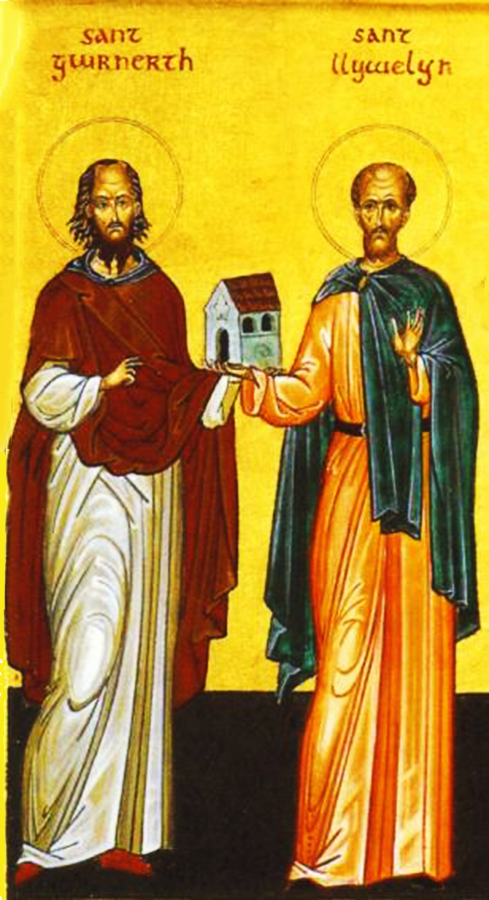Orthodox Saints of the Pre-Schism See of Rome

7th April
BRYNACH (BEMACH, BEMACUS) of CARN-ENGYLE, an Irishman, St. Brynach settled in Wales where he built a cell and church at a place now called Carn-Inglyi (Mountain of Angels), which overhangs Newport, Pembrokeshire, Wales. In addition, several churches in Pembrokeshire dedicated to him. There is little further information extant on this saint, though it seems likely that he reposed in the first half of the fifth century. Some sources state he is the same saint as St. Brannoc of Braughton (7th January), but there is no reliable information to support this assertion.
EPIPHANIUS the MARTYR, DONATUS of NORTH AFRICA, RUFINUS the MARTYR, and COMPANIONS, (Date Uncertain), Epiphanius was a bishop of an unknown See in North Africa. Various martyrologies list him as having been martyred along with thirteen (or fifteen) members of his flock. Nothing further is known of these martyrs.
FINIAN (FINAN, FINNIAN) of KINNITTY, (Sixth Century), a native of Munster, Ireland, St. Finian was said to have been given the gifts of prophecy and miraculous powers as a child. He became a disciple of St. Brendan the Voyager (16th May), at whose direction, St. Finian founded a monastery at Kinnitty (Irish: Cionn Eitigh), Co. Offaly, Ireland.
GIBARDUS of LUXEUIL, an Abbot of the the Abbey of SS. Peter and Paul of Luxeuil (abbaye Saint-Pierre et Saint-Paul de Luxeuil) in Luxeuil, France. St. Gibardus and his monks fled the Abbey in the hopes of evading the invading Huns, however, the Huns captured the monks and subsequently martyred them, circa 888.
GORAN (WORANUS), (Sixth Century), a friend of St. Petroc (4th June) who appears to have lived at Bodmin, Cornwall, England. There are several churches in Cornwall dedicated to him. No further information on this saint is extant.
HEGESIPPUS of JERUSALEM, a Jewish convert to Christianity, born in Jerusalem, St. Hegesippus spent twenty years of his life in Rome studying the early Church. The first to trace the Apostolic Succession of the Bishops of Rome, he is considered the father of ecclesiastical history. Though little of his work is survived to the present, it formed the backbone of Eusebius’ research for his Ecclesiastical History, and was recommended by St. Jerome (30th September). St. Hegesippus returned to Jerusalem for his final years and reposed there, most likely circa 180.
LLEWELLYN (LLYWELYN) and GWRNERTH, these two monks lived at Welshpool and later at Bardsey in Wales at some point in the sixth century Nothing further is known of their lives.
SATURNINUS of VERONA, a fourth century Bishop of Verona in the Veneto region of Italy. Nothing further is known about this saint.
Prior to the Schism the Patriarchate of Rome was Orthodox, and fully in communion with the Orthodox Church. As Saint John of Shanghai and San Francisco +1966 said “The West was Orthodox for a thousand years, and her venerable Liturgy is far older than any of her heresies”.
Details of British Saints excerpted from Orthodox Saints of the British Isles.
Details of continental saints from these sources.
In many cases there are several spelling versions of the names of saints from the British Isles. I use the Oxford Dictionary of National Biography version as the primary version with the more prevalent version in parenthesis e.g. Ceadda (Chad) of Lichfield.

